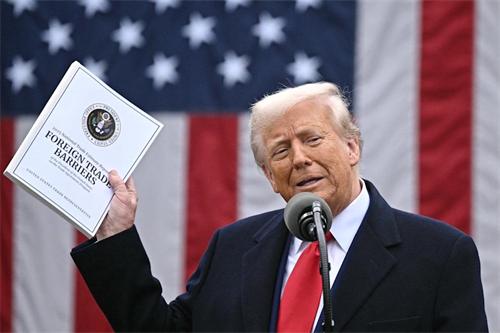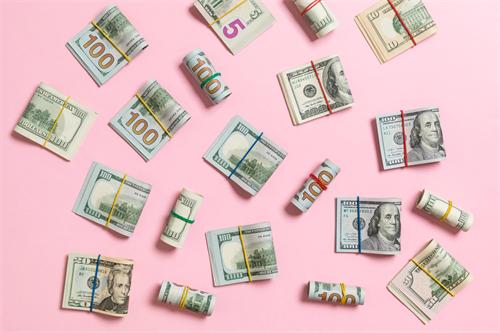Trump’s 50% Steel Tariffs Spark Silver Rally—What’s Next?

In 2025, the metals market was once again thrown into turmoil by a single move from Donald Trump.
The former president shocked markets by announcing that steel and aluminum import tariffs would be doubled—from 25% to 50%. This aggressive decision didn’t just rattle traditional metals—it lit a fire under silver. Spot silver surged over 4.5% intraday, breaking above the critical $36/oz threshold and hitting its highest level since February 2012.
But this silver rally isn’t just about market hype. It’s the result of multiple forces converging: the ripple effect of a major policy shift, robust industrial demand, and an emotionally charged market environment.
Tariffs: The Spark, Not the Whole Fire
At first glance, silver’s surge appears to be a direct response to Trump’s new steel and aluminum tariff policy. That’s partly true—the surprise announcement immediately triggered fears that similar protectionist measures could hit other metals. Investors quickly reshuffled their portfolios, pulling money out of industrial metals and flocking to safe havens. Silver, uniquely positioned at the crossroads of industry and finance, quickly emerged as a preferred safe haven for investors seeking both utility and protection.
But this isn’t just a classic “risk-off” move. It’s a strategic repositioning. In today’s uncertain global supply chain environment, silver’s smaller market size makes it particularly sensitive to capital flows—meaning a relatively small influx of money can drive disproportionately large price moves.
The Gold-Silver Ratio and the Capital Game
Another key factor behind silver’s rally is the extreme imbalance in the gold-to-silver ratio. Recently, this ratio spiked to 100:1—meaning one ounce of gold could buy 100 ounces of silver. That’s far above historical norms. This imbalance suggests either silver is severely undervalued or gold is overbought. The market’s behavior clearly indicates a bet that silver is due for a catch-up.
Because the silver market is only about one-tenth the size of the gold market, capital inflows hit it harder and faster. And that’s exactly what happened. Futures traders went heavy on long positions, and implied volatility on call options spiked, showing growing investor confidence in silver’s upside potential.
Solar Power: Silver’s Secret Weapon
Beyond the financial speculation lies a solid industrial story: silver is being devoured by the booming solar energy sector.
According to a recent report from the International Energy Agency (IEA), global solar capacity additions exceeded 600GW in 2024. Silver paste plays a critical role in solar panel production, and the rapid expansion of solar energy projects is driving a sharp increase in demand for the metal.
This growing industrial usage gives silver a powerful tailwind—one that gold lacks right now. In fact, during this latest rally, gold looked relatively lifeless. Spot prices remained flat and futures rose just 1.4%, a fraction of silver’s 4% jump. That divergence further reinforces the idea that silver is undergoing a fundamental revaluation.
The Cost of Trump’s Protectionism
Trump has defended his steep tariff hike as a move to protect national security and support domestic industries. He claimed the policy would boost American steel and aluminum production and reduce reliance on foreign imports—a “win for American workers.”
But history tells a different story. Trade protectionism may offer short-term relief, but it tends to distort market pricing, disrupt global supply chains, and trigger retaliatory tariffs. In the long run, it’s often consumers and businesses that foot the bill—through higher production costs and inflated prices.
Worse, America’s hardline stance is eroding global trust. Countries are no longer waiting for Washington to call the shots. They’re looking for alternatives, diversifying supply chains, and building regional self-sufficiency. In this context, Trump’s trade war may be accelerating a deeper, more permanent global realignment.
Silver’s Surge: Opportunity or Trap?
Silver’s explosive rise has caught the attention of retail investors everywhere. But caution is warranted. This isn’t just a “solar boom” story or a tariff-fueled panic—it’s a complex cocktail of macro policy shifts, supply-demand imbalances, and speculative momentum.
So, will silver keep climbing? That depends on several critical variables:
- Will Trump’s policies expand to other strategic metals like copper, lithium, or rare earths?
- Will global clean energy demand continue to accelerate, increasing industrial use of silver?
- Will geopolitical tensions or economic shocks trigger more flight to safety, boosting silver’s haven appeal?
For most investors, piling into physical silver may not be the best strategy. More flexible tools—like silver ETFs, futures, or options—offer better ways to manage risk and capitalize on price movements. And don’t forget: the same volatility that lifts silver to new highs can also drive brutal corrections.
Silver’s rally isn’t just about charts and candles—it’s a reflection of the tectonic changes reshaping our world. From clean energy’s hunger for industrial metals to Trump-era trade anxiety and investor fear cycles, silver has become a lightning rod for everything happening in the global economy.
In the years ahead, silver won’t just be a “poor man’s gold.” It’s poised to become a central player in the new industrial order—bridging energy, geopolitics, and finance.
For investors, the key isn’t to blindly chase the highs. It’s to understand the forces at play, manage exposure wisely, and stay one step ahead of the narrative.



